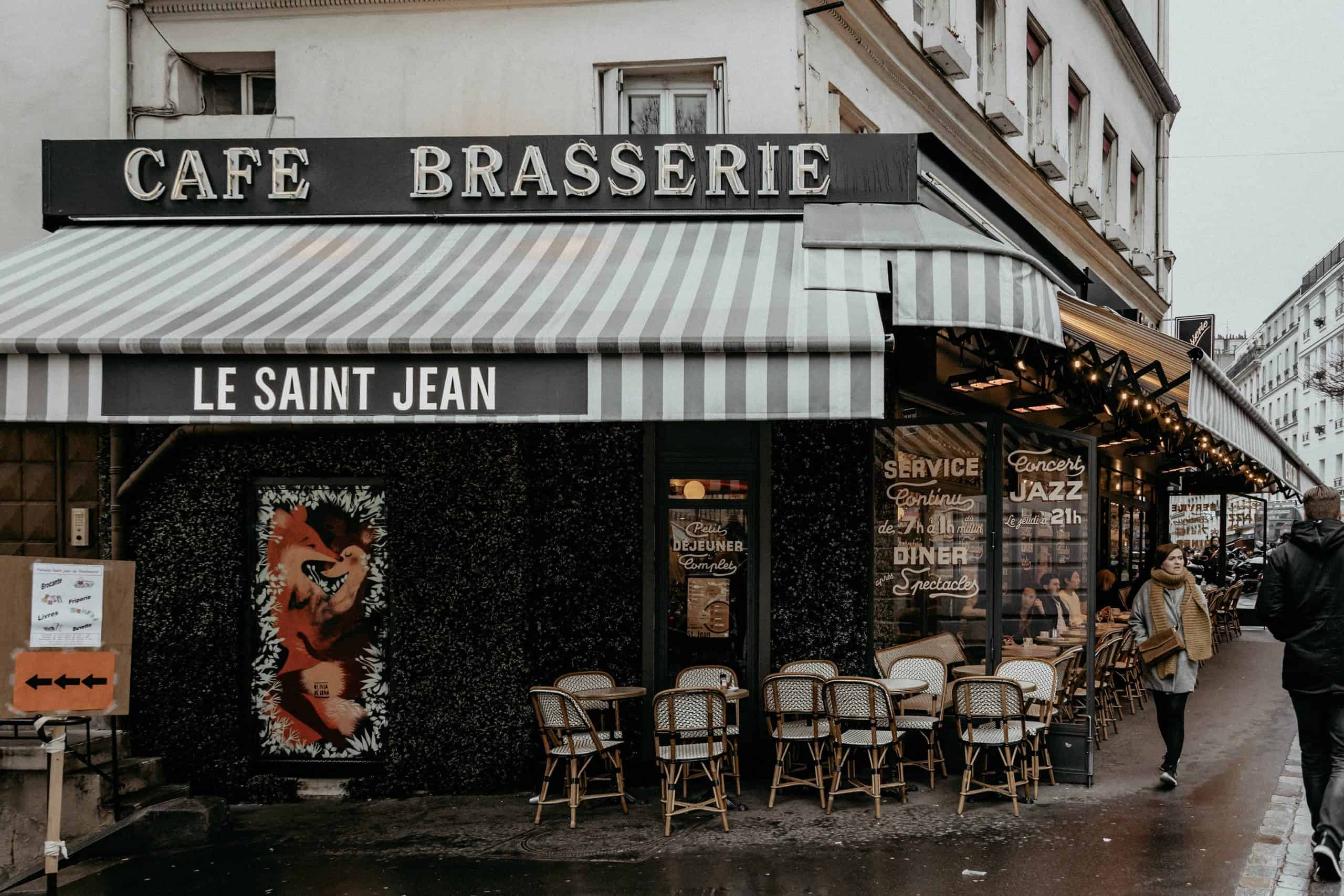Eating out is an essential part of the American dining experience. There seems to be an eating establishment suited for every situation. If we’re in a rush, we make a dash to the local fast food joint. If we’re celebrating a special occasion, we like to dress up and enjoy a night out at a swanky, upscale restaurant. But did you ever stop to think about why we’re drawn to eat at certain restaurants? And why we choose the food items that we do? Is it really what we naturally crave, or are there behind-the-scenes machinations influencing our decisions? The truth is, there’s a deliberate strategy in nearly every aesthetic decision that comes with designing a successful restaurant. From the color schemes to the music to the menu, there are elements designed to elicit a psychological response from the customer.  So if you’ve ever wondered what tricks restaurateurs employ to earn your business, you’re about to find out. The answers may surprise you.
So if you’ve ever wondered what tricks restaurateurs employ to earn your business, you’re about to find out. The answers may surprise you.
Musical Meal-odies
Lest you think the music you hear in your favorite eatery is a random choice, or just something that the staff wants to hear, think again. The choice of music in restaurant is picked meticulously to achieve the desired effect—to make you spend more money. According to a study by the University of Leicester, playing classical music in an restaurant encourages customers to pay more because it makes them feel more sophisticated and affluent.  The tempo of the music you hear is also a factor in how you dine. There’s a reason slower, more relaxed music, like classical or jazz, plays so prominently in higher-priced eating establishments: The slower the music, the more inclined you are to relax and take your time finishing your meal. This means you’re also likely to spend more on food and drinks.
The tempo of the music you hear is also a factor in how you dine. There’s a reason slower, more relaxed music, like classical or jazz, plays so prominently in higher-priced eating establishments: The slower the music, the more inclined you are to relax and take your time finishing your meal. This means you’re also likely to spend more on food and drinks.
They are playing nothing but 80s music in this teriyaki restaurant and it's the best way to wait for my chicken katsu.
— ARPelayre 💙 (@AlexPelayre) January 26, 2018
Fast food joints have a different approach—the music is always upbeat and faster paced. This inspires the customer to order faster and eat quicker to encourage them to hurry up and leave to make room for the next person in line. Rosalin Anderson, chief branding officer for Just Salad, says picking the right music for your establishment is essential, and in their case, required some tweaking. “When we started the business over 10 years ago, our ordering process was a little more hectic during the lunch rush and to offset this, we incorporated reggae music in all our stores, as it helped the customers to relax and stay in a more generous mood.”
Color Scheming
From the color of the logo to the wallpaper on the bathroom walls, a color scheme is another effective psychological method restaurants use to influence their customers. The Cornell University study “Turning the Tables: The Psychology of Design for High Volume Restaurants” bears this out, noting that the color chosen for dining establishments “not only affects people’s perceptions and attitudes but can actually elicit a biological response.” Yellow is an irritating color that can make people feel uncomfortable. Red, on the other hand, is a positive color and has been proven to stimulate our metabolism (and our appetite).  Now think about how many fast food places use red and yellow together: McDonald’s, Burger King, In-N-Out Burger, Pizza Hut, and Wendy’s are just a few prominent examples. Red makes customers hungry while yellow encourages them to leave quickly—that’s an effective strategy.
Now think about how many fast food places use red and yellow together: McDonald’s, Burger King, In-N-Out Burger, Pizza Hut, and Wendy’s are just a few prominent examples. Red makes customers hungry while yellow encourages them to leave quickly—that’s an effective strategy.  Upscale restaurants use a different tactic, which is why they utilize blues and greens so often. Both are relaxing to the eye, which works in the same capacity as slower music—it keeps you there longer, and you spend more money.
Upscale restaurants use a different tactic, which is why they utilize blues and greens so often. Both are relaxing to the eye, which works in the same capacity as slower music—it keeps you there longer, and you spend more money.
A Light Meal and Sound Nutrition
Another integral aspect of the dining experience is choice of lighting, which makes sense: You want to be able to see your food (and you want it to look appealing). But you also want to look attractive while you’re eating as well. In an interview with The Independent, Tom Strother, co-founder and creative director of interior design firm Fabled Studio, said, “From a psychological point of view, one of the key aspects to a restaurant’s design is the lighting. It has to be soft and flattering to make guests feel comfortable so that they are confident and relaxed.”  Fast food doesn’t operate the same way, as we’ve already covered, and by using cheap overhead fluorescent lighting (which is always unflattering), it encourages people to leave. But this also comes at a steep price—our health. According to a 2012 study by Cornell University, harsh lighting can actually encourage us to overeat, and by modifying a fast food restaurant to adopt softer lighting (and using relaxing music), test subjects consumed 175 less calories than they did eating in harsher lighting. So while fluorescent lighting is de rigueur for the industry now, this could change in the future.
Fast food doesn’t operate the same way, as we’ve already covered, and by using cheap overhead fluorescent lighting (which is always unflattering), it encourages people to leave. But this also comes at a steep price—our health. According to a 2012 study by Cornell University, harsh lighting can actually encourage us to overeat, and by modifying a fast food restaurant to adopt softer lighting (and using relaxing music), test subjects consumed 175 less calories than they did eating in harsher lighting. So while fluorescent lighting is de rigueur for the industry now, this could change in the future.  Acoustics are also important. It’s not just what type of music you hear while you eat, but volume and sound distribution matter as well. “One of our store locations has light pendants that are made out of thin rubber. This helps to catch loud sounds and diffuse it,” Anderson says. “This is a design element that the average guest might not know about regarding restaurant acoustics. It creates a more relaxed environment when it’s quieter in the store.”
Acoustics are also important. It’s not just what type of music you hear while you eat, but volume and sound distribution matter as well. “One of our store locations has light pendants that are made out of thin rubber. This helps to catch loud sounds and diffuse it,” Anderson says. “This is a design element that the average guest might not know about regarding restaurant acoustics. It creates a more relaxed environment when it’s quieter in the store.”
Bad acoustics can make a restaurant go from a 9 to a 3 real quick. Can't hear myself think
— Debbie Talia Misan (@DebbieMisan) August 12, 2017
Paula Stanbridge-Faircloth, marketing manager for The Contract Chair, says that acoustics also play a part in the chairs they design for eateries: “Most restaurant chairs that we sell are a combination of wood and upholstery. … Fully upholstered chairs will tend to muffle echoes, particularly important if your restaurant has wooden floors and if you’re going for a cozier, more intimate environment.”
Menu Venue
Anderson says an effective menu is all about simplicity: “We stick to a graphic design hierarchy to help guests navigate the menu in an easy and quick way. We design the menu so it’s not complicated, and the information that they want to see, such as calories and pricing, is very visible.” Pictures are also worth a thousand words—menus that show photos of entrees can increase sales by 40 percent. Likewise, food items that are bolded, highlighted, or framed in a box draw attention to the eye and drive up sales.  And the more descriptive the menu, the more effective. A study entitled “Descriptive Menu Labels’ Effect on Sales” showed that menus with more verbose descriptions increased food sales, and customers chose descriptive items 27 percent more than barebones descriptions of food items. Limited menus are another tactic many restaurants use as it takes the pressure off of guests to choose while also encouraging them to place their order faster.
And the more descriptive the menu, the more effective. A study entitled “Descriptive Menu Labels’ Effect on Sales” showed that menus with more verbose descriptions increased food sales, and customers chose descriptive items 27 percent more than barebones descriptions of food items. Limited menus are another tactic many restaurants use as it takes the pressure off of guests to choose while also encouraging them to place their order faster.
Price Price Baby
Perhaps the most important aspect of menu design is pricing. The way restaurants list their prices on their menu is designed to have a persuasive effect.  One of the most effective strategies is simply leaving the dollar sign off. A 2009 study on menu design showed that guests spent far more money when prices were listed without dollar signs than those that did (or that spelled out the pricing versus numerically displaying them). Even the smallest of tweaks in pricing yield good dividends. Menu items that price their items ending in 0.95 versus 0.99 are more pleasing to the eye and give the diner the feeling they’re getting a deal (even if they’re only saving four cents).
One of the most effective strategies is simply leaving the dollar sign off. A 2009 study on menu design showed that guests spent far more money when prices were listed without dollar signs than those that did (or that spelled out the pricing versus numerically displaying them). Even the smallest of tweaks in pricing yield good dividends. Menu items that price their items ending in 0.95 versus 0.99 are more pleasing to the eye and give the diner the feeling they’re getting a deal (even if they’re only saving four cents).
A Family Meal
Nostalgia is always a draw in marketing. If you can make someone feel emotionally invested in the dining experience, it’s always a win. And any restaurant with a family theme has an edge on the competition. It’s not just the eateries that declare themselves “family friendly,” but those that use a person’s name to enforce the connection.  When customers eat at Auntie Anne’s Pretzels, Mimi’s Cafe, or even Wendy’s (named after late founder Dave Thomas’s daughter), it invokes a familial draw, making diners feel like part of the family. We’re betting no matter where you live, there’s an individual mom and pop restaurant not far away, and if it includes “aunt,” “uncle,” “mom,” or any other moniker based on a relative, it probably stays busy.
When customers eat at Auntie Anne’s Pretzels, Mimi’s Cafe, or even Wendy’s (named after late founder Dave Thomas’s daughter), it invokes a familial draw, making diners feel like part of the family. We’re betting no matter where you live, there’s an individual mom and pop restaurant not far away, and if it includes “aunt,” “uncle,” “mom,” or any other moniker based on a relative, it probably stays busy.
Check, please.
When it comes to the best restaurant experience, it’s all about seeing the bigger picture. According to Kevin Gregory, creative director at AllDay Industry, a restaurant consulting firm, the best way “to capitalize on the benefits of designing the space to capture that profit margin is to focus on the experience you want to create and bring in the project partners that can help bring your vision to life.”  So the next time you’re enjoying your favorite meal in your favorite restaurant, take a look around. See if you can point to all the ways your experience has been crafted by industry experts. It may add a whole new level of intrigue to eating out.
So the next time you’re enjoying your favorite meal in your favorite restaurant, take a look around. See if you can point to all the ways your experience has been crafted by industry experts. It may add a whole new level of intrigue to eating out.  Discovering you’ve been psychological manipulated by the restaurant industry may make you feel a bit uneasy, but perhaps the end result isn’t so nefarious. It’s all about a symbiotic relationship that fulfills both parties: You enjoy your meal in a pleasant environment, and the places you frequent keep their overhead.
Discovering you’ve been psychological manipulated by the restaurant industry may make you feel a bit uneasy, but perhaps the end result isn’t so nefarious. It’s all about a symbiotic relationship that fulfills both parties: You enjoy your meal in a pleasant environment, and the places you frequent keep their overhead.



